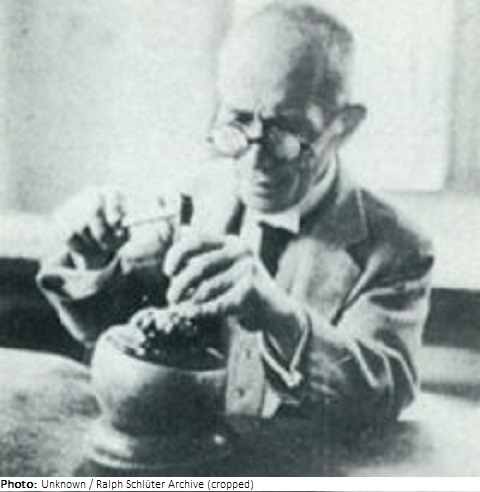
| Roles | Competed in Olympic Games |
|---|---|
| Sex | Male |
| Full name | Kamezo•Shimizu |
| Used name | Kamezo•Shimizu |
| Original name | 清水•亀蔵 |
| Other names | Nanzan Shimizu, 清水南山 |
| Born | 30 March 1875 in Saizaki, Mihara, Hiroshima (JPN) |
| Died | 7 December 1948 (aged 73 years 8 months 8 days) in Tokyo, Tokyo (JPN) |
| NOC |  Japan Japan |
Kamezo Shimizu was a Japanese metal artist and sculptor, who specialized in the Shakudo technique, which is a traditional surface-treated alloy with dark colors painted on metal. He developed significant refinements of this technique during the Meiji period (1868-1912) and published them in 1937 in the Japanese monograph Methods and Techniques of Metalworking.
Shimizu liked painting since he was a child. Thus, he enrolled in the painting department of the Tokyo School of Fine Arts but later switched to the engraving department, from which he graduated in 1896. He continued his studies under Fujita Bunzō and was encouraged to pursue his own artistic activities. Later Shimizu served as a teacher at Takamatsu Crafts School in the Kagawa Prefecture but had to retire because of illness. He then studied antique works of art in the former capital Nara.
Shimizu returned to Tokyo where he was appointed professor at the Tokyo School of Fine Arts, holding that position until 1945. During this time, he was an artist for the Imperial Household and chairman of the metal engraving section of the Imperial Art Academy and contributed greatly to the development of the engraving industry. His works were widely exhibited, amongst others at the Imperial Exhibitions. He also fostered his sister’s grandson, the famous Japanese painter Ikuo Hirayama, when he was a child. Just weeks before the end of World War II, Shimizu was evacuated to his hometown and decided to retire from his post. Immediately after the war supplies of material and tools were poor and hindered creative activities. He eventually died of peritonitis.
His inkstone screen with the title Wrestling with one arm entered in 1936 consists of forged silver with inlaid copper. Its height is 18 cm, the diameter 19 cm. These screens should prevent the ink from evaporating due to draft after grinding in water.
| Games | Discipline (Sport) / Event | NOC / Team | Pos | Medal | As | |
|---|---|---|---|---|---|---|
| 1936 Summer Olympics | Art Competitions |  JPN JPN |
Kamezo Shimizu | |||
| Sculpturing, Reliefs, Open (Olympic) |